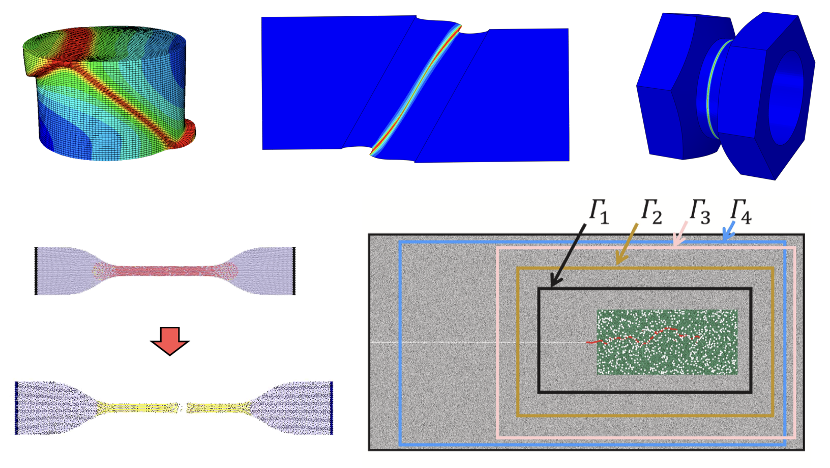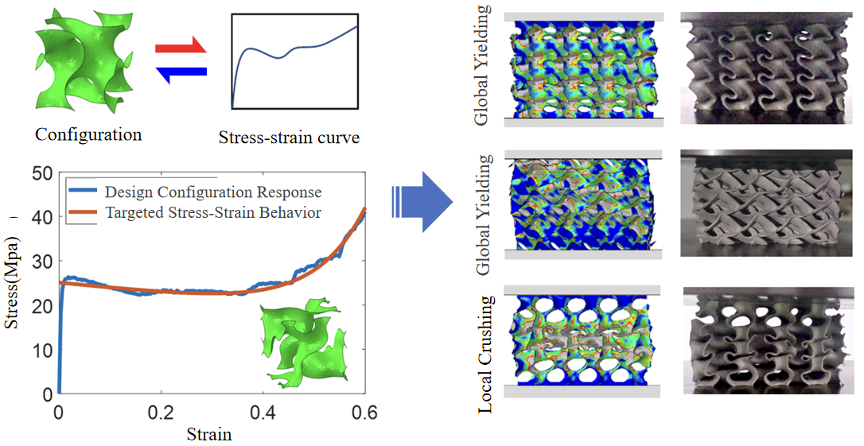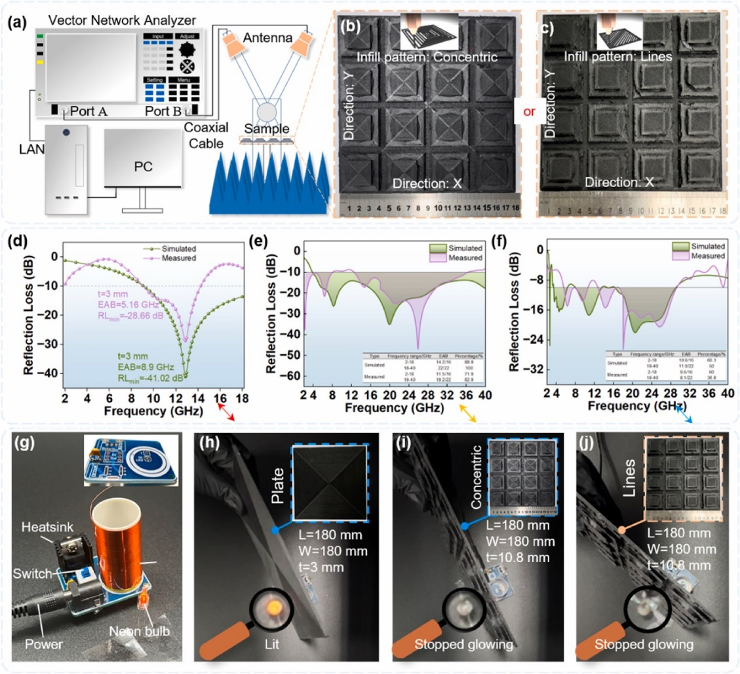This direction is mainly oriented to multi-functional integrated protective structure design and preparation methods. This direction mainly includes dynamic response and failure simulation and analysis methods of materials and structures under impact loads, design methods of multi-scale structural cushioning, energy absorption and dynamic failure control, design and preparation methods of composite materials and structures for impact response and failure, design of electromagnetic wave absorption impact resistant multifunctional integrated protective structures, and experimental characterization and evaluation techniques under extreme impact loads. From the impact dynamics theory, multifunctional structure design method, integrated preparation technology and experimental characterization and evaluation of multiple aspects new generation of launch vehicles, satellites, space stations, large surface ships to enhance the protective capacity to provide strong support.
n Dynamic response and failure simulation analysis of materials and structures under impact loads
Facing the dynamic failure process of complex structures under the action of explosion impact, a rate-dependent force-heat coupled phase field calculation method is established in a thermodynamically consistent framework, and an effective simulation of adiabatic shear time-space correlation evolution is realized by introducing the “generalized shear toughness” to characterize the energy dissipation of the damage evolution in the shear zone. For the fracture of non-homogeneous materials, a dynamic J-integral homogenization method based on discrete elements and area integrals has been developed, and the path-independent dynamic J-integral considering the fracture of complex microstructures has been realized, which has solved the difficult problem of quantitatively characterizing the dynamic crack extension resistance curve of non-homogeneous materials.

Fig. 1 Dynamic response and failure simulation analysis of materials and structures
n Design methods for cushioning, energy absorption and dynamic failure control of multi-scale structures
For the customized design of energy-absorbing cushioning materials, we propose a surface matrix configuration described by the family of implicit functions, which maintains the excellent mechanical properties of the surface matrix while greatly expanding the design space; and then we develop a deep neural network-based agent model for the mechanical response of the surface matrix structure, and combine it with genetic algorithms to realize the rapid inverse design of the surface matrix structure with customized stress-strain response, which provides an effective means of the design for impact protection. It provides an effective means for impact protection design.

Fig. 2 Design methods for cushioning, energy absorption and dynamic failure control of multi-scale structures
n Impact response and failure design and preparation methods for composite materials and structures
Facing the problems of high brittleness of traditional thermoset composites and easy delamination of laminated structures, which cannot meet the impact resistance requirements of naval equipment, a multi-scale toughened structure impact resistance design method based on the idea of material-structure integration is proposed. A composite sandwich structure design and manufacturing method based on three-dimensional woven fiber combined with modified epoxy resin is established, and an orthogonal bi-directional corrugated sandwich structure design strategy is developed, which effectively avoids the laminated configuration and significantly improves the structural impact resistance. Aiming at the computational dimensions of composite structures with multiple scales, a data-driven computational and analytical method based on macro and fine dynamic mechanics of composite structures is proposed, and the dynamic failure principal structure of composite structural systems with complex spatial configurations, such as three-dimensional weaving, is established, which can realize that the multi-scale dynamic mechanical behavior is not only “calculated” but also “accurately calculated”. The multi-scale dynamic mechanical behavior can be not only “calculated”, but also “calculated accurately”.

Fig. 3 Failure design methods for composite materials and structures
n Electromagnetic wave absorption anti-impact multi-functional integrated protective structure design
The electromagnetic wave absorption multifunctional integrated protective structure design method is an advanced structural design technology that combines electromagnetic wave absorption, impact resistance and multifunctional protection. By integrating a variety of high-performance materials and innovative structural design, the method realizes significantly enhanced protection against shockwave, debris and other threats while maintaining structural lightness. At the same time, the design also has a stealth function, effectively reducing the risk of detection by the enemy. This design method not only greatly improves the survivability of the equipment, but also significantly enhances its concealment in complex battlefield environments, providing more comprehensive security for modern equipment.

Fig. 4 Electromagnetic wave absorption anti-impact multi-functional integrated protective structure design
n Experimental characterization and evaluation techniques under extreme impact loads
Facing extreme impact scenarios such as high strain rate, ultra-high temperature and multi-field coupling, the research team has carried out a series of research on test characterization and testing methods. The team has developed an ultra-high-speed collision test loading device based on the secondary light air gun, which can realize the test loading of 5mm aluminum projectile at 5km/s and observation and characterization; established an ultra-high-power electromagnetic impact equivalent loading device based on pulse power supply, which realizes the strong impact equivalent loading with continuously adjustable waveform and power up to 500MW; carried out a research on the structural dynamic response test characterization under the rocket explosion separation load, which reveals the response law of point and line multi-type pyrotechnic separation structure impact source and the response law of point and line multi-type pyrotechnic separation structure impact source. It has revealed the response law of impact source and energy dissipation mechanism of point-type and line-type multi-type pyrotechnic separation structure; carried out high-speed trans-medivehicle water entry test, and developed high-speed water entry impact load response formation law and design method of impact reduction. It provides a strong guarantee for the test characterization of important equipment under extreme impact environment.

Fig. 5 Experimental characterization and evaluation techniques under extreme impact loads
